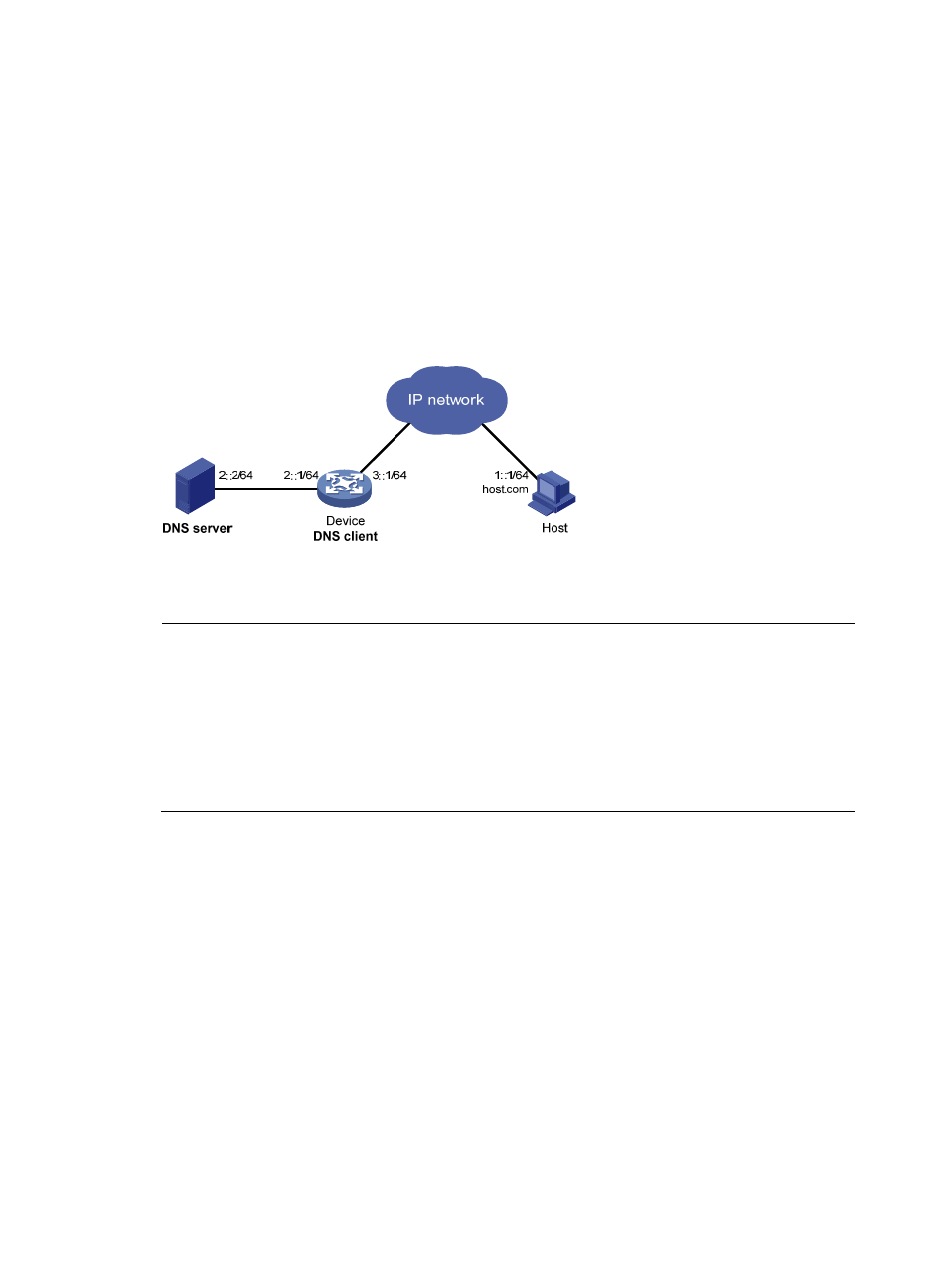Network requirements, Configuration procedure – H3C Technologies H3C WX3000E Series Wireless Switches User Manual
Page 97

86
Dynamic domain name resolution configuration example
Network requirements
As shown in
, the device wants to access the host by using an easy-to-remember domain name
rather than an IPv6 address. The IPv6 address of the DNS server is 2::2/64 and the server has a com
domain, which stores the mapping between domain name host and IPv6 address 1::1/64.
Configure dynamic domain name resolution and the domain name suffix com on the device that serves
as a DNS client so that the device can use domain name host to access the host with the domain name
host.com and the IPv6 address 1::1/64.
Figure 37 Network diagram of dynamic domain name resolution
Configuration procedure
NOTE:
•
Before performing the following configuration, make sure that the device and the host are accessible to
each another via available routes, and the IPv6 addresses of the interfaces are configured as
shown
.
•
This configuration may vary with DNS servers. The following configuration is performed on a PC
running Windows Server 2003. Make sure that the DNS server supports the IPv6 DNS function so that
the server can process IPv6 DNS packets, and the interfaces of the DNS server can forward IPv6
packets.
1.
Configure the DNS server
# Enter the DNS server configuration page.
Select Start > Programs > Administrative Tools > DNS.
# Create zone com.
As shown in
, right click Forward Lookup Zones, select New zone, and then follow the
instructions to create a new zone named com.